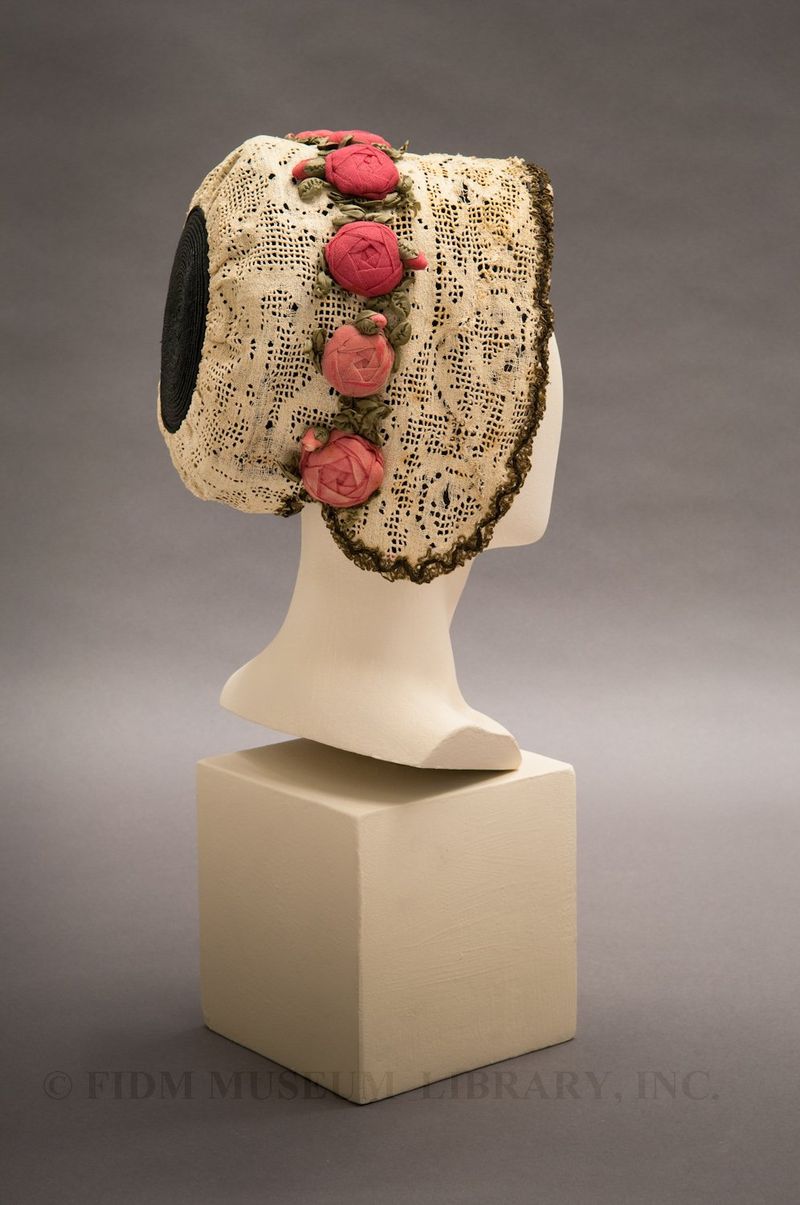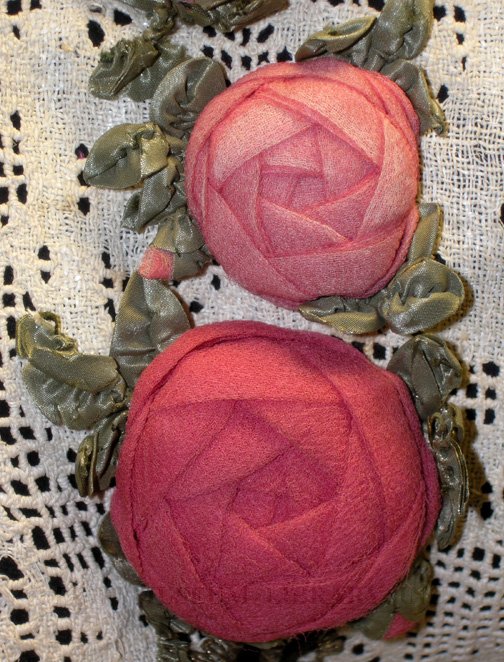Jeanne Lanvin bonnet, 1913
 Jeanne Lanvin
Jeanne Lanvin
1913
Gift of Joshua & Jenny Livingston
2000.879.39
Like her contemporary Gabrielle "Coco" Chanel, Jeanne Lanvin's (1867–1946) career began with hats. As a teenager, Lanvin apprenticed with at least two Parisian milliners, including Maison Félix. In 1889, Lanvin, still in her early twenties, opened her own millinery business. The successful milliner ventured into dress design only after the birth of her daughter Marguerite Marie-Blanche in 1897. Lanvin designed a wardrobe for Marguerite Marie-Blanche, and her millinery clients were eager to purchase similar garments for their children. In response to this demand, Lanvin opened a department dedicated to childrenswear in 1908. The next year, Lanvin began designing for women and girls. She also joined the Chambre Syndicale de la Haute Couture. Spanning almost 60 years, Lanvin's career flourished until her death in 1946. The house of Lanvin is still in existence, with Alber Elbaz as head designer.
Lanvin's millinery training enabled her to dress the whole woman. In the words of one Vogue writer, "Madame Lanvin, in designing a toilette [gown], never forgets the head, which she insists shall be in harmony with the costume."1 When Lanvin created this bonnet, the most fashionable silhouette was the slim, high-waisted Empire style. This neo-classical style was based on the art of the Empire period (1804-1815). The fashionable neo-Empire silhouette included high-waisted columnar dresses accessorized with small, brimless hats, a silhouette promoted by haute couture designers like Jeanne Lanvin. Modeled after early-nineteenth century prototypes, this historically-inspired avant-garde bonnet offered a trim contrast to the gigantic, wide-brimmed hats previously worn.
A romantic confection of lace and roses, Jeanne Lanvin's charming bonnet is an excellent example of her aesthetic. As a couturier, Lanvin focused on embellishment and surface decoration, applied with careful consideration to quality. Using ribbons, lace, sequins, beads, metallic thread, seashells, and other tools of the trade, Lanvin designed beautifully embellished, yet sophisticated, gowns and accessories. The dimensional chiffon roses decorating this bonnet were a signature Lanvin motif, one she used throughout her career in varying forms.
1 Fernandez, Jeanne Ramon. "Fashion: Paris Sets Forth the Mode of 1919." Vogue (Apr 1, 1919): 45
